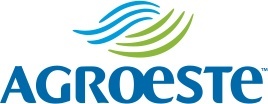Lung high blood pressure (PH) is a persistent condition characterized by high blood pressure in the arteries of the lungs. As the illness advances, it can reach a sophisticated stage referred to as end-stage lung hypertension. At this point, people experience extreme symptoms as well as need specialized care to handle their condition successfully. Identifying these signs is important for prompt treatment and improved quality of life. This post aims to provide an insightful overview of the principal symptoms and signs of end-stage pulmonary high blood pressure.
Comprehending Lung High Blood Pressure
Pulmonary hypertension takes place when the capillary in the lungs narrow, become tight, or get obstructed. As a result, the heart hondrexil precio en chile has to work harder to pump blood through the lungs, resulting in enhanced stress within the pulmonary arteries. Gradually, this extreme pressure can damage the heart as well as impair its capacity to operate effectively.
There are five different types of lung high blood pressure, each with its particular causes. These types include pulmonary arterial hypertension (PAH), pulmonary high blood pressure as a result of left cardiovascular disease, lung high blood pressure due to lung conditions and/or hypoxia, chronic thromboembolic lung high blood pressure, as well as lung high blood pressure with unclear and/or multifactorial mechanisms.
End-stage pulmonary hypertension describes the sophisticated stage of the disease where symptoms are usually severe, and the condition has actually dramatically influenced a person’s day-to-day live.
Typical Signs And Symptoms of End-Stage Lung High Blood Pressure
1.Lack of Breath: Among one of the most common signs and symptoms of end-stage lung high blood pressure is shortness of breath, likewise called dyspnea. As the illness advances, also simple activities such as strolling or climbing up stairways can end up being challenging, leaving people breathless as well as fatigued.
2.Exhaustion: Individuals with end-stage pulmonary hypertension may experience a relentless feeling of exhaustion as well as low energy levels. This tiredness can be debilitating, making it tough to accomplish daily jobs.
3.Upper body Pain: Breast discomfort, also described as angina, can be ciri ciri money amulet asli a sign of end-stage pulmonary hypertension. This pain may take place during exercise or at rest and is commonly referred to as a rigidity or pressure experience in the upper body.
4.Swelling: The buildup of liquid in the legs, ankle joints, as well as feet, called peripheral edema, is a common sign of innovative lung high blood pressure. This swelling happens due to the buildup of stress in the capillary, triggering fluid leak into the surrounding cells.
5.Cyanosis: Cyanosis is identified by a blue color to the lips, skin, or nails resulting from poor oxygenation of the blood. In end-stage lung hypertension, minimized oxygen levels in the blood stream can lead to this noticeable discoloration.
6.Passing out or Faintness: As the heart’s pumping ability ends up being compromised, people with end-stage lung high blood pressure may experience episodes of fainting or really feel lightheaded. These episodes occur because of insufficient blood flow to the mind.
7.Uneven Heart Beat: End-stage lung high blood pressure can create an uneven heart beat, additionally known as arrhythmia. This unusual heart rhythm might result in palpitations, an experience of the heart battering or fluttering in the upper body.
- Extra Signs:
Aside from the main signs stated over, individuals with end-stage pulmonary hypertension might likewise experience other additional signs, consisting of:
- Trouble focusing or complication
- Reduced appetite as well as unintentional weight reduction
- Rest disturbances, such as insomnia or sleep apnea
- Stress and anxiety or anxiety
- Weakness or muscular tissue aches
- Extreme sweating
- Lowered urine output
Seeking Clinical Attention
It is critical for people experiencing these signs to look for medical attention without delay. Identifying end-stage lung hypertension generally involves a comprehensive examination, consisting of medical history, physical exam, imaging examinations, and also specialized evaluations of lung and also heart feature.
Early medical diagnosis and also treatment can aid handle signs, sluggish illness progression, and possibly boost lifestyle. Treatment alternatives for end-stage lung hypertension might include medicines, oxygen treatment, lifestyle modifications, and also in extreme cases, lung transplant.
Final thought
End-stage lung hypertension is a severe condition with debilitating symptoms. Identifying the indicators of sophisticated disease is crucial for effective monitoring and prompt intervention. If you or someone you understand experiences persistent lack of breath, fatigue, upper body discomfort, swelling, cyanosis, or other associated symptoms, it is crucial to look for clinical attention promptly for an accurate diagnosis and ideal treatment.
Bear in mind, very early intervention is key in improving outcomes and also enhancing the lifestyle for individuals dealing with end-stage pulmonary hypertension.

Deixar Um Comentário